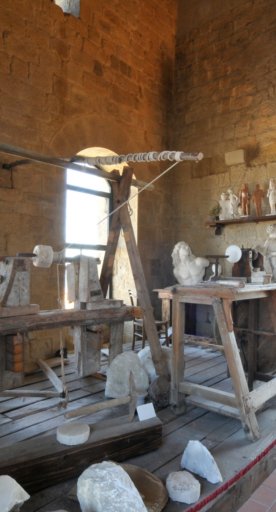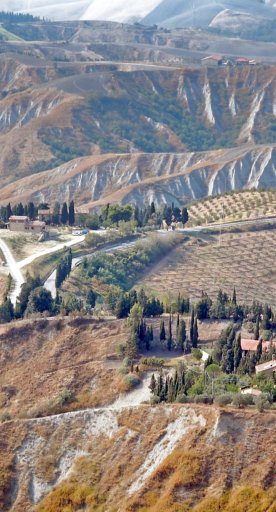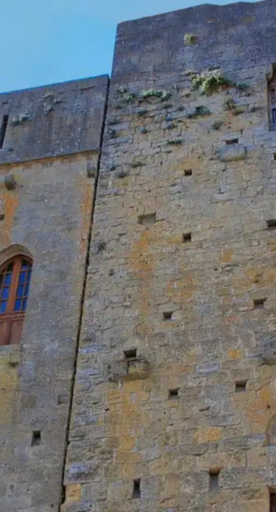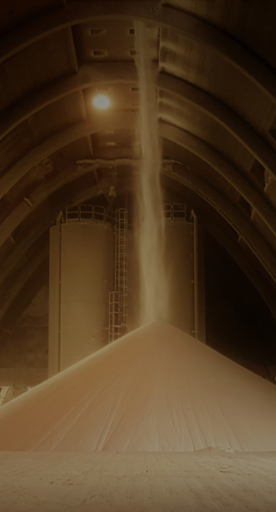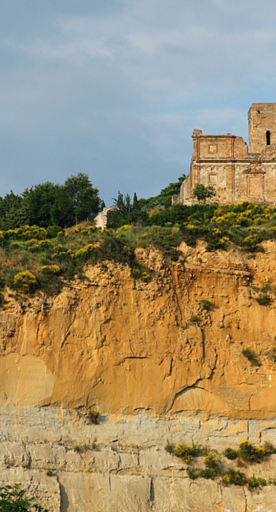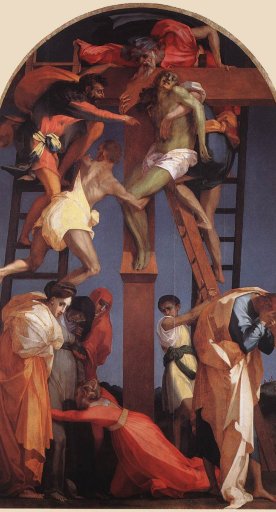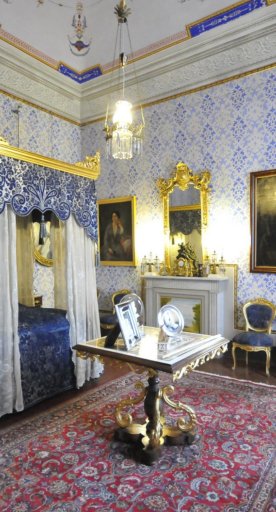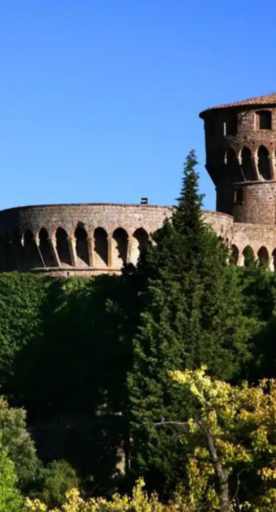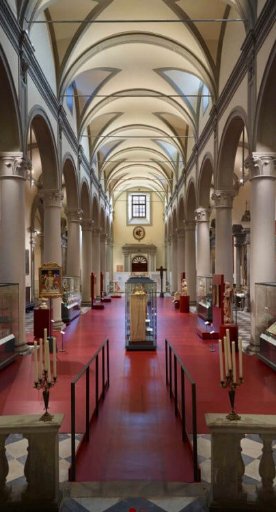Volterra Cathedral
The Cathedral of Santa Maria Assunta was built in 1120 atop a church dedicated to St. Mary
The Cathedral of Santa Maria Assunta, the Volterra Cathedral, was rebuilt after a violent earthquake around 1120 on top of a pre-existing church dedicated to St. Mary and was then expanded in the second half of the 13th-century.
The cathedral displays classical decoration in its transept, including sloping rhombuses which housed ceramic basins. The same rhombuses are also present on the pointed façade, divided into three sections with large quadrangular pilaster strips in the Lombard style. The marble doorway is built using recovered materials from the Roman theatre of Vallebuona.
You can visit the Cathedral, the Baptistery, and the Centro Studi Espositivo Santa Maria Maddalena with one ticket. For information, please visit the website Pass "Anima di Volterra"
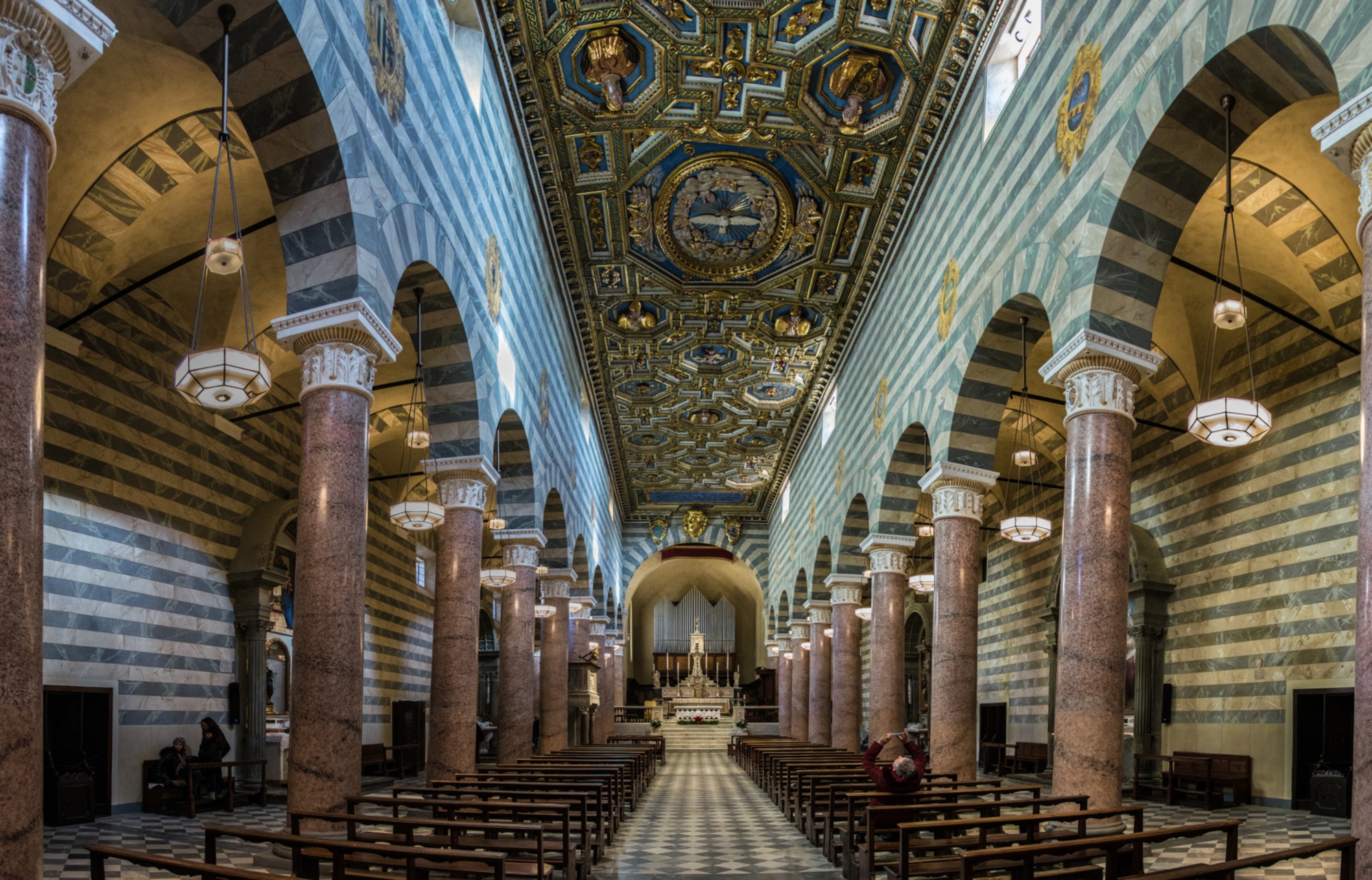
The interior, while retaining the cathedral-shaped Latin cross in its structure and layout, displays a late-renaissance appearance. The space is divided by 22 columns covered in plaster simulating pink granite, with white plaster capitals created in the 16th century by Leonardo Ricciarelli.
The central nave and the transept are covered by a majestic coffered ceiling, a beautiful combination of geometric, decorative and floral elements as well as figures of saints. They also feature two large ovals of the Assumption and the Holy Spirit, designed by Francesco Capriani, carved by Jacopo Paolini, and gilded by Fulvio Tucci between 1580 and 1584. The main altar hosts the elegant ciborium by Mino da Fiesole (1471). The Holy Father is depicted in the middle of the vault, a fragment of a pictorial cycle executed by Niccolò Circignani with stories of the life of the Virgin Mary.
On the right of the altar, the first chapel conserves the relics of St Octavian, held within a sarcophagus created by Rafaello di Andrea Cioli from Settignano. In the chapel next to it, the wooden collection of the Deposition (1228) is preserved, a masterpiece of Romanesque wooden sculpture. Lastly, the chapel built along the sides of the cathedral is dominated by the painting by Jacopo Chimenti, known as ‘l’Empoli’, portraying Saint Charles in prayer in front of the Virgin Mary.
The chapel of Our Lady of the Sorrows belongs to the cathedral’s complex, within which are preserved two sculptural groups in painted terracotta attributed to Andrea della Robbia, the "Nativity", with the fresco of the Procession of Magi by Benozzo Gozzoli, and the "Adoration of the Magi".
